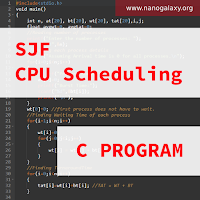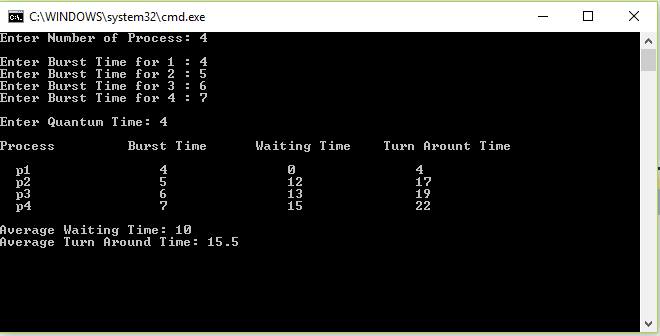

- #C program for srtf cpu scheduling algorithm program how to
- #C program for srtf cpu scheduling algorithm program software
- #C program for srtf cpu scheduling algorithm program code
Shortest Job first has the advantage of having minimum average waiting time among all scheduling algorithms. The job having less burst time will get scheduled first. Shortest job first (SJF) or shortest job next, is a scheduling policy that selects the waiting process with the smallest execution time to execute next. Print the matrix for process name, arrival. The next nop lines contain four variables: process name (pname), arrival time (atime) and burst time (btime). The first line is the number of processes (nop).

The Operating System uses various scheduling algorithm to schedule the processes. Hence, we will write the program of the Longest Remaining Time First Process Scheduling Algorithm in C++, although, it’s very similar to C. Scheduling Algorithms for single CPU and show the results in the form of graphs. In this scheduling algorithm, we find the process with the maximum remaining time and then process it.
#C program for srtf cpu scheduling algorithm program software
Waiting Time = Turn Around Time – Burst Time Shortest Job First (SJF) is a CPU Scheduling algorithm in which allocation of CPU is based on burst time. What is CPU scheduling:-In Multiprogramming systems, the Operating system schedules the processes on the CPU to have the maximum utilization of it and this procedure is called CPU scheduling. In essence, an operating system is a collection of software programs. Waiting Time(W.T): Time Difference between turn around time and burst time.Turn Around Time = Completion Time – Arrival Time By far the easiest and simplest CPU scheduling algorithm is the first-come, first served (FCFS) scheduling technique. Turn Around Time: Time Difference between completion time and arrival time. Sortest Job First (SJF) Scheduling Program in C DESCRIPTION : Out of all the available processes, the CPU is assigned the process with the shortest burst time.Completion Time: Time at which process completes its execution.Robin CPU Scheduling Algorithm using ProgrammingLanguagepi.waitingtime.
#C program for srtf cpu scheduling algorithm program code
SJF is generally used for long term scheduling. Following is a snapshot of code with output written in C programming language.
#C program for srtf cpu scheduling algorithm program how to
How to compute below times in SJF using a program? Advantages of SJF: SJF is better than the First come first serve (FCFS) algorithm as it reduces the average waiting time. SJF can be used in specialized environments where accurate estimates of running time are available.Īlgorithm: 1- Sort all the processes in increasing order While it is not possible to predict execution time, several methods can be used to estimate the execution time for a job, such as a weighted average of previous execution times. It is practically infeasible as Operating System may not know burst time and therefore may not sort them.Step 2 : Using enhanced bubble sort technique, sort the all given processes in ascending order according to arrival time and if two or.

This problem can be solved using the concept of aging. Step 1 : Input the number of processes required to be scheduled using Non-Preemptive Priority Scheduling Algorithm, burst time for each process, arrival time and there respective scheduling priority.


 0 kommentar(er)
0 kommentar(er)
